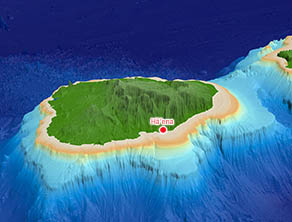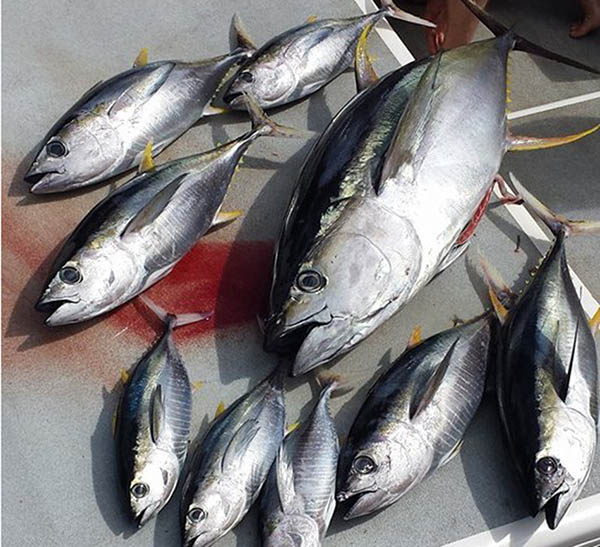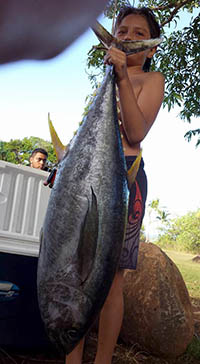Night Fishing for Ahi:
“I had a boat, and I used to go and catch ahi," Kelii says. "I’d go at nighttime. You don’t need to waste gas because you don’t have to troll. They go trolling during the day. Night time, I know when you catch them. You’ve got to know the outline of the drop offs, off the reef, the ledge. The ahi go to the ledges, because that is where they have babies. So we know all the certain places where they would hang. But you have to go when its perfect, when it’s flat and the current’s right, the drift, and then you feed them. “I make my own chum, but no like the chum to be bloody, because when it’s bloody then you attract the sharks. When you attract the sharks, then the fish aren’t going to come. So you have to make your own chum. I used to use sweet feed of barley—soak the barley overnight, flush out—and I used to put a little dog food in there, dry dog food, and mix that. I used to take half of a plastic 55-gallon drum—I’d cut them in half and that would be my chum bucket—and I just load them off. 
“I get out there and I set my chute from my boat. I put a parachute out in the front, because it holds the boat from drifting. You don’t want it to be windy or anything because the drift is going to be fast. So then you chum behind the boat. Then all I use is only two reels: one on my right and one on my left. "My bait is fresh bait, ‘opelu. Put the whole ‘opelu on the hook and drop them down. This side twenty-five pulls, drop them down. This other side, thirty pulls. Then you can feel where the bite is: if this one bites then you know the fish is up high. That one bites, you know the fish is low; so the next time you put them lower. “He would take out the boat, put it in the water before he goes to work at the airline,” Nalani interjects, “then get off the airlines, come home, I’d take him down to the pier, he’d paddle out on the surfboard and go out fishing. One night it was so fast he went out and the next thing you know he was back in the bay with four ahis, by himself. I thought he was kidding when he said he was in the bay already and he said he had four. I was like, ‘yeah, right.’ And then just sleep on the boat in the morning.” “Not everybody that can handle nightimes,” Kelii continues, “because this is a whole different story. I mean, all you see is dark. You got one light on the boat and that’s all you see. Just the water, and to the side you don’t see nothing! And the smell of the palu! The equilibrium goes. Most time they say, you’ve got to focus on something, but it’s night time so what are you focusing on? That’s a test. “When somebody tells you ‘I can handle the ocean,’ I say ‘Okay, let’s go tonight.’ And I take them out there. I took Nalani’s cousin out with me one day, and my son: ‘Oh Papa, can handle! Go on out!’ We went out, I started setting up the boat and these two guys were vomiting. They went in the front of the cab, laid down, slept, they couldn’t do nothing! "So I baited the two poles, waited half an hour, the reel went off. Oh man, they heard that reel scream, they jumped up...and they went back down! They were no help that night. We went on a little while, ended up with one 150-pounder. "But night time, they don’t fight as much as they do day time. They’ll pull a little bit, and then I just hand-reel them, hand-land them in, bring them by the boat and just gaff them. "But that’s why I say, man, if we had to, we survive. We survive.”
|
|||||||||||
|
|||||
|
|||||





